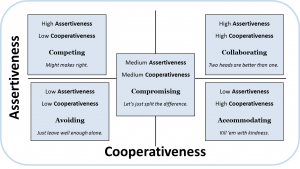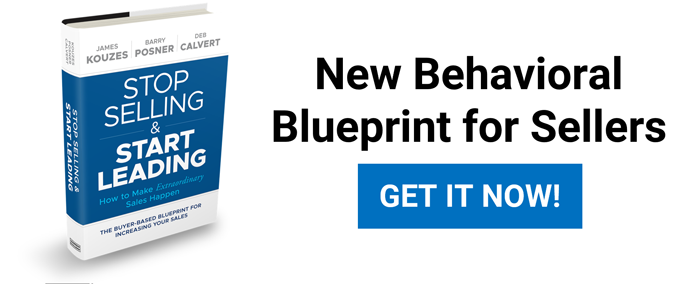Negotiate Smoothly by Understanding Conflict Styles - Part 4
 Like it or not, most negotiations have an element of conflict even if it’s nothing more than a feeling. Negotiating, like conflict, involves two parties on two different sides of an issue. There is an implication that one party will win and the other will lose.
Like it or not, most negotiations have an element of conflict even if it’s nothing more than a feeling. Negotiating, like conflict, involves two parties on two different sides of an issue. There is an implication that one party will win and the other will lose.
As we worked through the first four styles of conflict, we illustrated how there are wins and losses embedded in the mindset or in the actuality of each type. We also described when and how to use each type in a negotiation. Our objective is to help sellers become more nimble in moving between styles in order to more effective in negotiations. Being more nimble requires understanding your own style and the style being used by the other party in the negotiation.
Each of the five styles of conflict serve a purpose. There are appropriate times and ways to use each of these styles. Savvy sellers can readily identify which style fits a situation and are more effective because of their facility in using all five styles.
As a general rule, the best style to open with is Collaborating. It is the one style that demonstrates both a high level of assertiveness and a high level of cooperativeness. This means the seller is focused on getting his or her own needs met AND on meeting the needs of the buyer.
Collaborating produces outcomes that are superior to compromises. With a compromise, both the buyer and the seller accept terms that do not fully satisfy their needs. With a Collaborating style, the aim is to fully meet all the needs of both parties.
Here are the two main reason why few negotiations are collaborative and, instead, have both sellers and buyers choosing alternate styles. Collaborating takes time and trust.
To be effective with a Collaborating style, you and your buyer must both be willing to invest the time it takes to enlarge your conversation and to get creative in your approach to finding terms of an agreement that will be mutually and completely fulfilling.
The amount of time it will take to do this is directly proportionate to the level of trust between the two parties in the negotiation. When trust is high and information is shared freely, it will take less time to expand the conversation, understand one another’s needs and get creative. When trust is low, the time it takes to collaborate will be expansive and, quite likely, prohibitive.
The wrong time to try and build trust is during the negotiation. Building a firm foundation of trust and gathering information about your buyer before you negotiate works a lot better. The right sequence, stretched over the duration of your relationship with the buyer, is to establish trust first and then to allow for adequate time to use a Collaborative approach in your negotiation.
When the urgency of the situation makes it impossible to fully utilize the Collaborative approach, a back-up plan to consider is this: Compromise with conditions. Work out an interim plan based on your compromises with the condition and expectation that you will continue working on a longer-term agreement that allows time for a Collaborating approach.
Of course, this is all contingent on the buyer’s willingness to also adopt a Collaborating approach. While you should strive to open the negotiation this way and to entice the buyer into a like mode, you should also be prepared to flex if that doesn’t happen.
The fallback positions of Compromising, Accommodating, Avoiding and Competing were covered earlier in this series. Be sure to check out the full descriptions of these styles so you will be armed to respond appropriately no matter which style and tactics your buyer puts into play.
This blog post is the last of four in a series on conflict styles and how to use them in negotiating.
To learn more about the TKI Assessment and how it can help you with negotiation and conflict resolution skills, please contact PFPS for coaching and training. You can also access the assessment directly at CPP.


